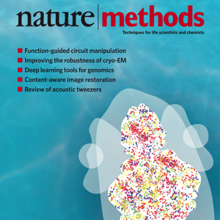Filter
Associated Lab
4 Janelia Publications
Showing 1-4 of 4 resultsWhole-brain imaging allows for comprehensive functional mapping of distributed neural pathways, but neuronal perturbation experiments are usually limited to targeting predefined regions or genetically identifiable cell types. To complement whole-brain measures of activity with brain-wide manipulations for testing causal interactions, we introduce a system that uses measuredactivity patterns to guide optical perturbations of any subset of neurons in the same fictively behaving larval zebrafish. First, a light-sheet microscope collects whole-brain data that are rapidly analyzed by a distributed computing system to generate functional brain maps. On the basis of these maps, the experimenter can then optically ablate neurons and image activity changes across the brain. We applied this method to characterize contributions of behaviorally tuned populations to the optomotor response. We extended the system to optogenetically stimulate arbitrary subsets of neurons during whole-brain imaging. These open-source methods enable delineating the contributions of neurons to brain-wide circuit dynamics and behavior in individual animals.
Simultaneous recordings of large populations of neurons in behaving animals allow detailed observation of high-dimensional, complex brain activity. However, experimental approaches often focus on singular behavioral paradigms or brain areas. Here, we recorded whole-brain neuronal activity of larval zebrafish presented with a battery of visual stimuli while recording fictive motor output. We identified neurons tuned to each stimulus type and motor output and discovered groups of neurons in the anterior hindbrain that respond to different stimuli eliciting similar behavioral responses. These convergent sensorimotor representations were only weakly correlated to instantaneous motor activity, suggesting that they critically inform, but do not directly generate, behavioral choices. To catalog brain-wide activity beyond explicit sensorimotor processing, we developed an unsupervised clustering technique that organizes neurons into functional groups. These analyses enabled a broad overview of the functional organization of the brain and revealed numerous brain nuclei whose neurons exhibit concerted activity patterns.
We developed a new way to engineer complex proteins toward multidimensional specifications using a simple, yet scalable, directed evolution strategy. By robotically picking mammalian cells that were identified, under a microscope, as expressing proteins that simultaneously exhibit several specific properties, we can screen hundreds of thousands of proteins in a library in just a few hours, evaluating each along multiple performance axes. To demonstrate the power of this approach, we created a genetically encoded fluorescent voltage indicator, simultaneously optimizing its brightness and membrane localization using our microscopy-guided cell-picking strategy. We produced the high-performance opsin-based fluorescent voltage reporter Archon1 and demonstrated its utility by imaging spiking and millivolt-scale subthreshold and synaptic activity in acute mouse brain slices and in larval zebrafish in vivo. We also measured postsynaptic responses downstream of optogenetically controlled neurons in C. elegans.
Due to their small size and transparency, zebrafish larvae are amenable to a range of fluorescence microscopy techniques. With the development of sensitive genetically encoded calcium indicators, this has extended to the whole-brain imaging of neural activity with cellular resolution. This technique has been used to study brain-wide population dynamics accompanying sensory processing and sensorimotor transformations, and has spurred the development of innovative closed-loop behavioral paradigms in which stimulus-response relationships can be studied. More recently, microscopes have been developed that allow whole-brain calcium imaging in freely swimming and behaving larvae. In this review, we highlight the technologies underlying whole-brain functional imaging in zebrafish, provide examples of the sensory and motor processes that have been studied with this technique, and discuss the need to merge data from whole-brain functional imaging studies with neurochemical and anatomical information to develop holistic models of functional neural circuits.

